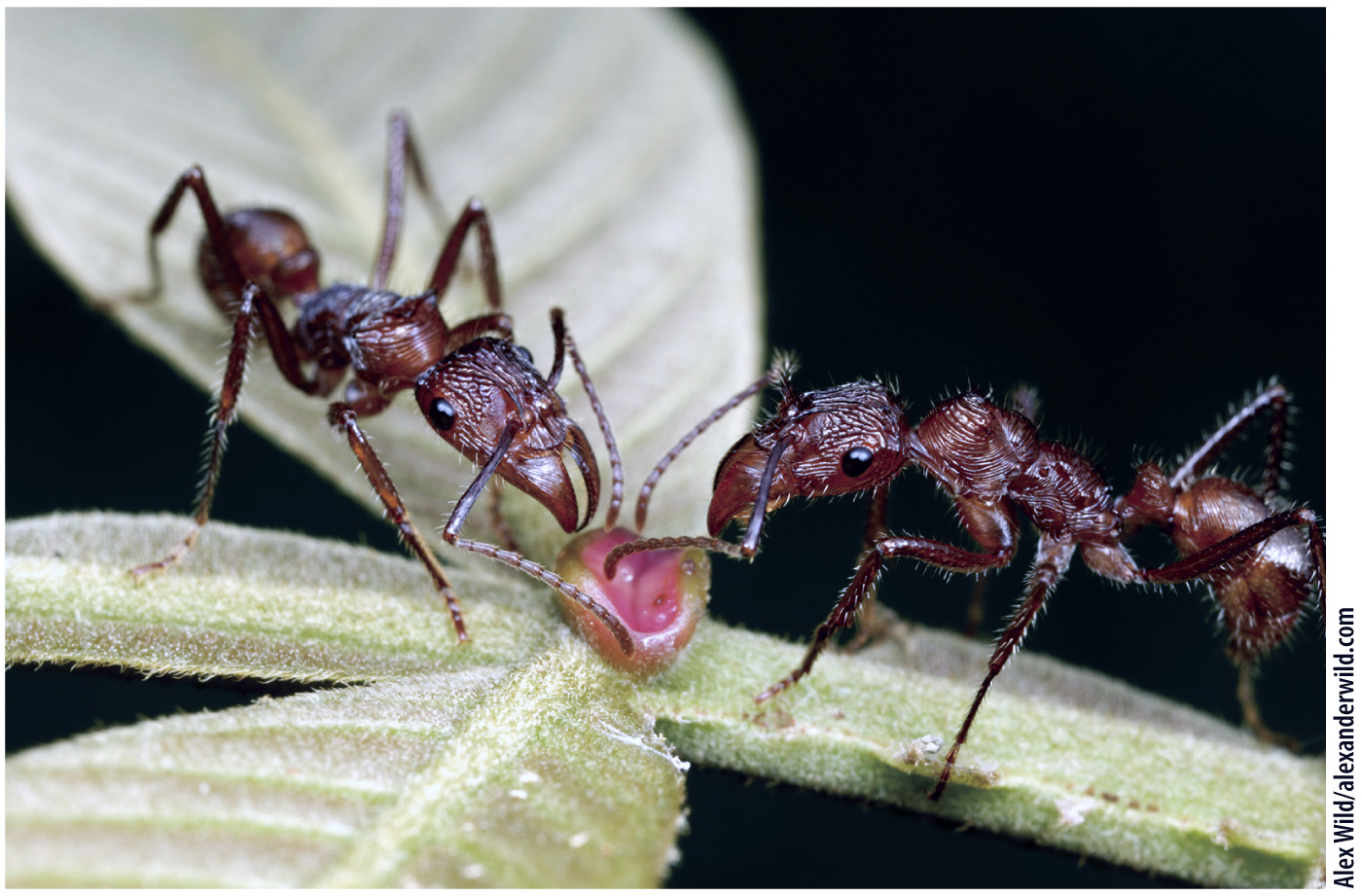Some plants provide food and shelter for ants, which actively defend them.
While many plants have mechanical defenses against herbivores and nearly all have at least one form of chemical defense, a smaller number of species have evolved ecological defenses against herbivory. These plants “employ” animals as bodyguards in exchange for shelter or nourishment, much the way that many plants provide food or other rewards to animals that transfer pollen and disperse seeds (Chapter 30).
Nectar is typically associated with flowers. However, many plants produce nectar in glands located on their leaves (Fig. 32.12). These extrafloral nectaries attract ants, which move actively throughout the plant in search of nectar. When the ants encounter the eggs or larvae of other insects, they consume these as well. The value of this relationship to the plant is easily demonstrated: When ants are prevented experimentally from patrolling certain branches, those branches suffer higher rates of herbivore damage.

FIG. 32.12 Ants attracted by an extrafloral nectary. These ants receive a food reward and also consume any insect eggs or larvae they encounter on the plant.
Page 678
A small number of plants, several hundred in total, have evolved a much closer relationship with ants. These so-called ant-plants provide both food and shelter for an entire colony of ants, which then defend their host. The bullhorn acacia (Acacia cornigera), which grows in dry areas of Mexico and Central America, produces hollow spines at the base of each leaf, as well as protein- and lipid-rich food bodies on the tips of its expanding leaves. Symbiotic ants (Pseudomyrmex ferruginea) live in the spines and feed on the food bodies (Fig. 32.13). To protect this source of food and shelter, the ants actively defend the plant. When the ants detect an invader, they produce an alarm pheromone that causes the entire colony to swarm over the plant, attacking any insects or vertebrates (including scientists) that they encounter. The ants will attack the growing tip of a vine that might climb up the host and even destroy plants growing in the soil beneath the host Acacia.

FIG. 32.13 The symbiosis between ants and the bullhorn acacia. (a) Ants live in the plant’s thorns, and (b) the plant provides food (the yellow food bodies). The ants vigorously defend their home against animals and plants alike.
This system works well until it comes time to reproduce. Without some mechanism to control the hypervigilant ants, any visiting pollinator would be attacked as though it were a truly unwanted guest. So that pollinators may visit flowers unharmed, flowers of the bullhorn acacia release a chemical that repels the resident ants.
The interactions between ant-plants and their ants are highly coevolved. The ant species are found only in association with their host plants. And while ant-plants can be grown without ants, herbivores would rapidly consume an undefended plant in nature because ant-plants lack the chemical defenses present in related species that do not host ants.

